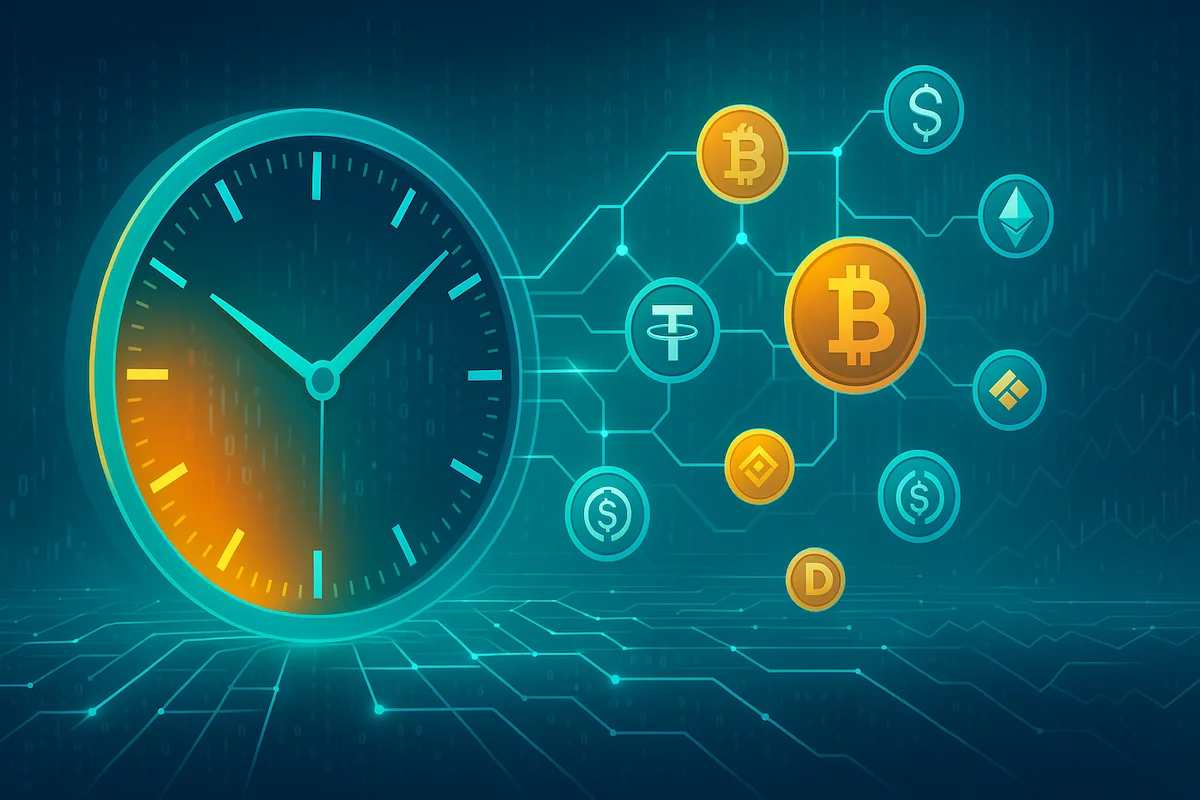
A growing number of people are creating, buying, selling, and swapping non-fungible tokens (NFTs). However, this new market presents many challenges. Determining the value of an NFT is one of the most difficult aspects for both buyers and sellers.
The valuation of NFTs can be tricky. NFTs have no precedent. The closest analogy is the valuation of non-digital art, which is subjective and not strictly correlative to NFTs. It is important to consider several valuation-based methodologies and variables to arrive at an approximate value.
Valuation Theory
In valuation theory, two primary approaches are relevant with regard to NFTs:
- Discounted cash flow
- Market
The Discounted Cash Flow (DCF) Approach
The discounted cash flow approach considers future revenue that will be received as the result of owning an NFT. For example, cash flows derived from the ownership of an NFT might include licensing and royalty payments. This approach to obtaining fair market value can be beneficial for NFTs that grant rights to a share of royalty income.
Current applications of the DCF approach can be seen in the music NFT space, where NFT holders may earn a percentage of the royalty income on any songs that they own shares of.
The Market Approach
While the DCF valuation approach is applicable in certain situations, the market approach is the more commonly used technique. When using the market approach, fair market value can be determined by the price at which an NFT changes hands from a buyer to a seller. In other words, past sales of a similar NFT can help to determine its present value.
4 Challenges to Determining NFT Valuation
NFTs pose several unique challenges when it comes to determining a stable and predictable value.
1. NFTs are unique
NFTs are difficult to value because of their one-of-a-kind nature and the numerous types of NFTs available. NFTs can relate to or include:
- Royalties - Some NFTs give holders the right to collect a share of royalties.
- Intellectual property - Certain NFTs provide the holder with intellectual property rights related to the underlying artwork or asset.
- Digital asset tokens - Certain NFTs earn digital asset tokens, which can be used within the issuing ecosystem or NFT marketplace to evolve the NFT, mint new NFTs, or purchase other physical or digital goods.
- Physical property - NFTs can give rights to physical property while others provide access rights to physical spaces.
2. Markets are extremely volatile
When valuing an NFT, it is critical to remember that the NFT market is highly volatile. Past prices do not predict current valuation and prices can change drastically within a short timeframe, defeating any attempt to pin down a fair market value. Thus, while historical pricing data may be considered a quality determinant of other assets’ fair market value, the same is not true for a majority of NFTs.
3. Market data is often not reliable or legitimate
Using market data to value NFTs can lead to confusion. The volatility in the NFT market means that past sales information is not always reliable in predicting future prices. Floor prices can be manipulated, especially for small collections. And pricing one-of-a-kind or extremely rare NFTs with little or no historical sales data poses a significant challenge.
4. The NFT valuation landscape continues to evolve
NFTs do not fit neatly into existing valuation methodologies. Therefore, they must be analyzed separately in order to approximate fair market value. While the practices of NFT valuation are constantly evolving, it does not seem possible—or like a sound strategy—to apply valuations across a company's entire NFT holdings at this time.

How to Use Market Data to Value NFTs
For the above reasons, applying market valuation methodologies to NFTs can be daunting. However, using market data to value NFTs is still one of the best methods available in this emerging space. Here are a few things to keep in mind to obtain the best possible results:
1. Market Data for the Relevant Collection
Historical sale price data for similar NFTs can help develop a reasonable valuation in certain circumstances. However, it is essential to consider whether the data you are using is relevant. Due to the volatility of the NFT market, past sales data is only useful if it is relatively recent.
In addition, there must be sufficient sales volume. If only a small handful of similar NFTs have sold recently, chances are the data will be skewed and not adequate on its own for valuation purposes. If luck is on your side and past sale price data is relevant, the most valuable numbers to obtain are the average sale price of similar NFTs and the floor price.
2. Macro NFT Market Trends
Like most markets, the NFT market is ever-changing. The price of NFTs can increase or decrease in the NFT marketplace due to broader macro market conditions. To aid the valuation process, market data must be up to date, and price assumptions must take into account market trends. If the market for similar NFTs has been increasing substantially in recent months, it is generally safe to assume that NFTs currently on the market will fetch higher prices from buyers than those sold in the past. And because NFTs are most often purchased with cryptocurrencies such as Ethereum or Bitcoin, the cryptocurrency's current value or purchasing power will also need to be factored in. An increase in the ETH value of an NFT may not mean an increase in the USD value of the NFT and vice versa.
3. NFT Specifications
NFTs are limitless in terms of the rights they may contain. For example, one NFT may give the holder ownership rights to a piece of digital art, while another may provide the holder with the right to use physical property such as a house or swimming pool. The critical thing to remember is that each right contained within the NFT can affect the value. And in this case, the specifics matter. An NFT that grants the holder usage rights to a swimming pool for one year will be worth more than an NFT that grants the holder usage rights to the same swimming pool for one day.
The creator of the NFT often has a tremendous influence on its value as well. Almost any NFT created by a famous person or widely respected artist may be more likely to garner a higher price than a similar NFT created by a lesser-known person or entity. And like most commodities, the rarer an NFT is, the higher its value is likely to be. Accordingly, the value of an NFT will be affected by the number of similar pieces available now or in the future and by whether the NFT holds historical significance.
4. NFT Risk Assessment
One often overlooked aspect of NFT valuation relates to the storage of data. NFTs and associated data, such as metadata, can be stored either on or off the blockchain (“on-chain” or “off-chain”). On-chain data storage is considered less risky because it is more secure and accessible than off-chain storage. As a result, NFTs that are stored on-chain can command higher prices. And the reputation of the blockchain the NFT and associated data are stored on can also affect the price.
In some instances, an NFT can be stored on-chain while the associated data is stored off-chain. Off-chain data is likely stored on a server that may be susceptible to disruptions and other risks that could limit accessibility. For example, what happens if the hosting server goes down? Will the NFT holder no longer have access to the off-chain data? The risk of loss or disruption in accessibility will lower the value of the NFT.
NFTs are relatively new to the digital landscape and can carry increased risks that other assets may not. For example, the chance of user error affecting the NFT value is certainly higher than zero. Many NFT buyers are inexperienced and are more susceptible to mishaps such as losing access to their wallet or falling for a scam. And with the rapid rise of NFT popularity, governments are certain to take notice and increase regulation in the near term. NFT investors must consider what would happen to the value of their portfolios if governments begin regulating all NFTs as securities, for example.

Summing Up NFT Valuation
NFTs are new and do not fit neatly into any other asset class for valuation purposes. That being said, it is still necessary to value them for accounting and tax reasons. Existing valuation theories provide a path forward and can help NFT holders analyze their assets. In particular, market data can be useful so long as its limitations are considered. By understanding market trends along with each NFT's unique specifications and associated risks, you will be well on your way to assessing fair market value.
Bitwave is your NFT Accounting Solution
Bitwave unlocks access to non-fungible assets for enterprises through on-chain NFT recognition, inventory management, cost basis tracking, automatic revenue recognition, and more. Schedule a demo today to get more visibility into your NFT accounting from minting to monetization.


Disclaimer: The information provided in this blog post is for general informational purposes only and should not be construed as tax, accounting, or financial advice. The content is not intended to address the specific needs of any individual or organization, and readers are encouraged to consult with a qualified tax, accounting, or financial professional before making any decisions based on the information provided. The author and the publisher of this blog post disclaim any liability, loss, or risk incurred as a consequence, directly or indirectly, of the use or application of any of the contents herein.







